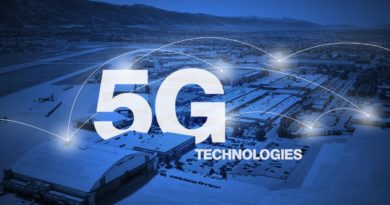Qualcomm 5G mmWave Call Shatters Long-Distance Record
Qualcomm smashed the record on 5G distance calls, possibly tearing down barriers to the revolution.
The first successful test of an extended-range 5G data call via mmWave was completed on Monday — setting a new record for a long-distance call — according to a press release from the company.
Call range has been a crucial obstacle for cell phone service carriers moving to mmWave technology to use faster 5G speeds. Qualcomm’s shattering of the call distance record might hasten 5G smartphone deployment, reports TechXplore.
Qualcomm announced it had carried out a 5G call over a distance of 2.36 miles (3.79 km) — twice the distance it projected when it debuted its novel antenna system in 2019. The company collaborated with Ericsson, the multinational telecommunications company, and Casa Systems, and ultra-broadband provider, on this project.
Few details on the new accomplishment were released, but Qualcomm said its record-shattering call “was achieved by applying extended-range software to commercial Ericsson hardware.”
Senior Director of product management at Qualcomm Gautam Sheoran said: “With this major milestone being the first step in utilizing mmWave for an extended-range 5G data transfer, our collaboration with Casa Systems and Ericsson is paving the way to implement fixed broadband services for broad coverage in urban, suburban and rural environments.”
There’s no telling yet whether speed reduction occurred because of the extended range. The most widely-held concern about 5G technology regards the substantial loss of signal strength when it moves through brick or cement in buildings. Glass and wood also cause attenuation, but to a lesser extent, TechXplore reports.
This design flaw means two things: transmission distances may be shorter, and city-dwelling users could suffer from degraded call quality as they move outside or inside a building.
The limits of distance could also force 5G phone users to remain within roughly one block of a transmission tower to keep a solid signal, not to mention the negative effects of rain and humidity.
However, with Qualcomm’s latest 5G transmission distance breakthrough these typical barriers may be falling. Massive multiple-input, multiple-output (MIMO) facilities placed across densely-populated areas using beamforming to overcome physical obstacles may also help maintain clear phone conversations.
As telecommunications and smartphone companies prepare for the switch to 5G networks, it’s good to see the worrisome barriers to the technological shift start to lose their opacity.
Source:https://interestingengineering.com




